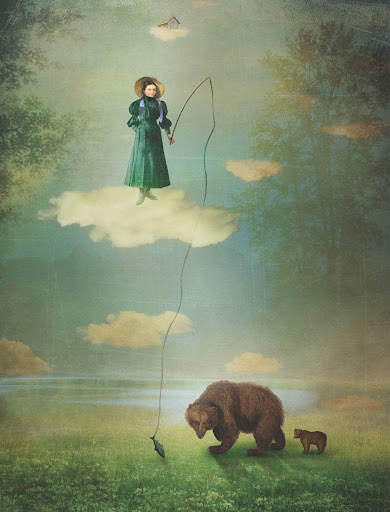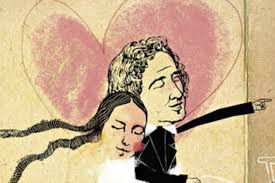Mia has said the heroines of fairy tales make her want to claw her own face off. She worries about the effect on her own daughter of an obsession with pink, plastic princesses churned out in their millions by Disney Inc.
Don’t blame fairy tales, blame the men who took the tales and retold them. Charles Perrault, Jacob and Wilhelm Grimm, and most of all, Walt Disney.
Fairy tales were originally told by women to the children who sat at their knee as they worked to keep the family fed and clothed and clean, just as women do today. Fairy tales reflected the world of its tellers – poor wood-cutters and cobblers, fishermen and farmers, girls that had to work to make a living and dreamt of spinning straw into gold. The power in the stories was always held by women, whether for good in the shape of a wise woman, or for evil in the shape of witches.
In the late 17th century, Perrault turned the wise woman of these tales into a fluffy fairy godmother with a sparkly wand, and moved the stories into castles. Then the Grimm Brothers came along and rewrote the tales according to their own stern and patriarchal vision of the world.
In their original 1812 edition of Children’s & Household Tales, there are 61 female characters that have magical powers compared to only 21 males; and many of these are dwarfs.
In this edition, the Grimm brothers were simply recording tales told to them by the women of their acquaintance, some young, some old, some poor and illiterate, others middle-class and well-educated.
In later editions, the Grimm brothers re-wrote these stories to make them “suitable for children”. Many stories with active female protagonists were discarded or diluted.
The original Little Red Riding Hood, for example, was a peasant girl who escapes the wolf due entirely to her own cleverness. It was Charles Perrault who gave her a red cap – symbolic of passion and blood – and made the tale a cautionary one in which the heroine is gobbled up by the wolf. It was the Grimm Brothers who brought in a male hunter to save her, making her seem like a twit.
The original Rapunzel – named ‘Persinette’ in a 1696 tale by French writer Charlotte-Rose de Caumont de la Force – was the daughter of poor people, so hungry they steal a handful of parsley from a witch. They are forced to give up their child or face the death penalty. Locked away in solitary confinement in a tower, Persinette sings so beautifully she causes the prince to fall in love with her. Persinette has sex with him, plots with him to escape and, in the end, gives birth to twins, saves the prince with her healing tears, and persuades the witch to relent. The Grimm brothers’ retelling made her into such a meek little idiot that the psychological term ‘Rapunzel syndrome’ was coined to describe a woman who waits passively to be rescued.
Fairy tales work because they speak in metaphor, archetype, and symbol. They contain within them all of our deepest fears and deepest desires. Don’t deny your children the thrill and danger and power of a good fairy tale; just pick the right ones to tell them. One in which the heroine is brave, bright, kind, resourceful, and saves both herself and others.
Like Gretel, who rescues Hansel from the witch.
Like Eliza in ‘Twelve Swans’ who weaves magical shirts from nettles to save her brothers.
Like the young wife in ‘The Robber Bridegroom’, who tells stories to save her life.
Like Gerda, who saves Kay from the Snow Queen, melting the fragment of ice in his heart with her tears.
And, yes, even Cinderella, who really triumphs because she is hard-working and kind, not because she has great shoes.
Though great shoes always help, of course.








